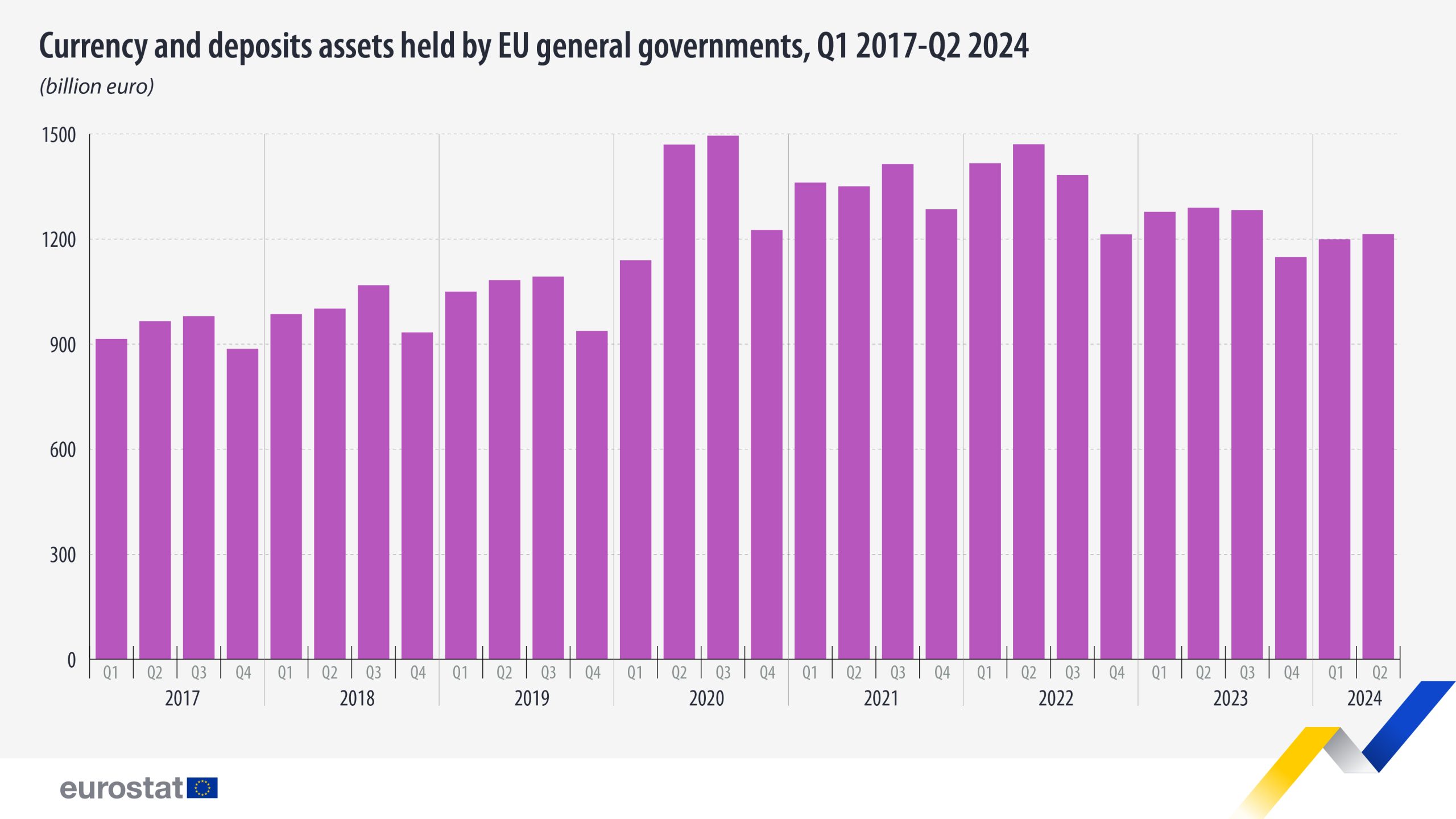The general government financial accounts published by Eurostat cover transactions in financial assets and liabilities as well as the stock of financial assets and liabilities.
Governments hold currency and deposit assets (stocks) such as money in bank accounts and cash reserves to make daily payments.
In the second quarter of 2024, EU general governments’ currency and deposit assets amounted to €1 214 billion and represented 18% of EU general government total financial assets.
This information comes from data on quarterly government finance published by Eurostat today. The article presents a handful of findings from the more detailed Statistics Explained article on quarterly government finance statistics.
Currency and deposit assets tend to decline at the end of the fourth quarter of each year. In some budgetary systems, there are efforts to execute payments by the end of the year, thus shortening the balance sheet. With excess deposits, governments can also decrease their gross debt, for example, by redeeming government bonds. Holding excessive cash reserves implies foregoing opportunities to hold other assets (with a higher yield).
During the beginning of the COVID-19 pandemic in the first half of 2020, EU governments increased their deposit assets substantially due to the net incurrence of debt liabilities exceeding the financing of the deficits. At the level of the EU, currency and deposits made up 23% of total financial assets at their peak in the third quarter of 2020. In recent quarters the deposits as percentage of total financial assets returned to pre-pandemic ratios.
Source dataset: gov_10q_ggfa




